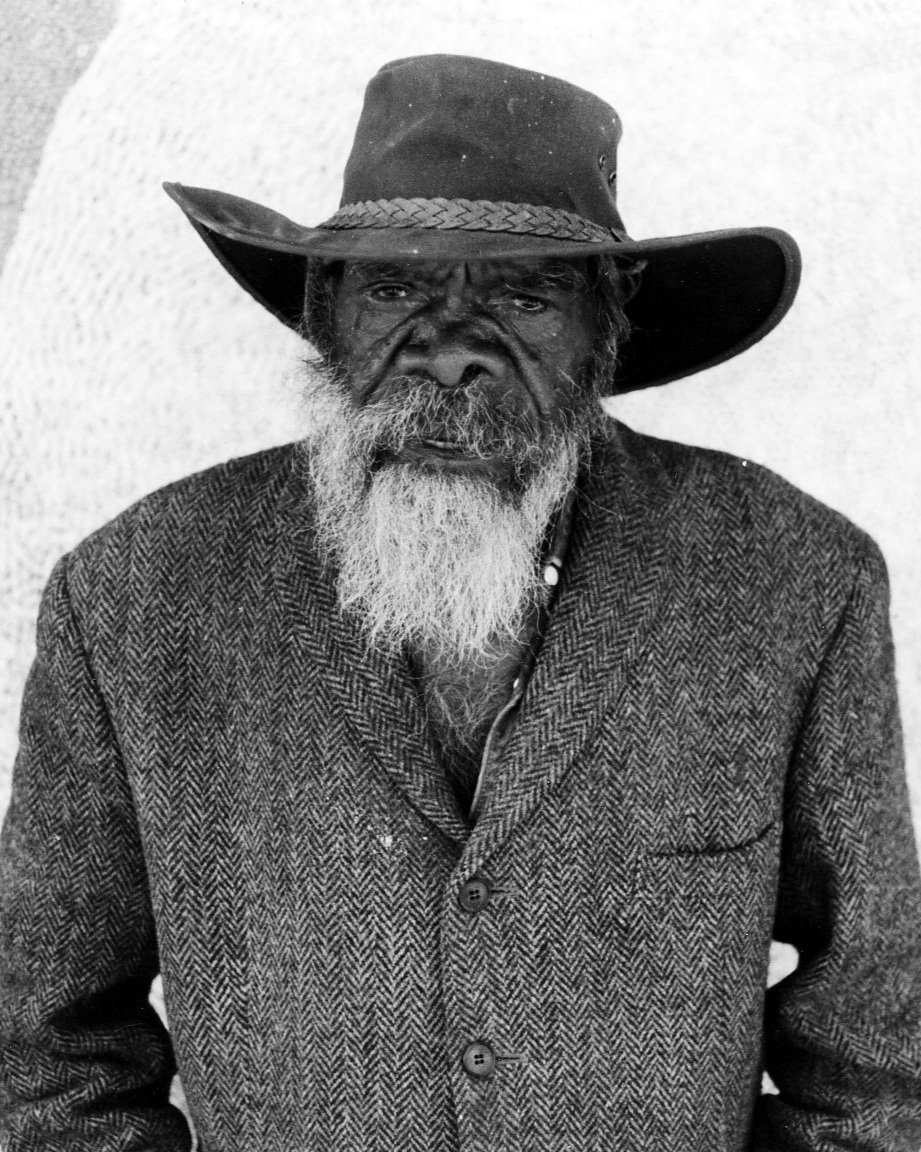MICK NAMARARI TJAPALTJARRI
MARKET ANALYSIS

© Paul Sweeney. Source: Papunya Tula Artists
Works by this artist in the market fall in to three distinct historical periods. His early 1970s boards, while drawing attention from ethnophiles, have achieved reasonable results but have failed to shine alongside works by his more illustrious contemporaries of that period. Only two of these appear in his top ten results despite a number of highly accomplished pieces, including his magnificent Untitled 1972 painting offered for sale at Sotheby’s in July 2003 selling for only $38,100 (Lot 107). Namarari appears to have painted very few works between 1973 and the mid 1980s having left the Papunya community and settled further west in a move that preceded the Pintupi exodus in the late 1970s and his own move to Walungurru.
His paintings of the mid-1980s are generally looser than his early boards, though they failed to abandon structure completely. On occasion, works from this period feature figurative elements, as in his untitled 1987 work sold at Christie's in 2005 for just $21,510 (Lot 207). The image of a large snake entering a cave site appears clumsy in comparison to his later works. The same is true for other more formal works of the period, including Whirlwind Dreaming 1986, sold at Sotheby’s in 1998 (Lot 51). During the late 1980s and early 1990s, Namarari returned to a style reminiscent of his early work, painting a large number of works in a more linear style with sites depicted as concentric and radiating lines. Despite the quality of these often powerful and well-constructed images, they have proved to be unsuccessful in the market, a majority either failing to sell or only barely reaching their low estimates. Measuring 183 x 153 cm and selling for $63,000 (at an estimate of $30,000-50,000 in Sotheby's June 2000 sale (Lot 117)), Tjakaalpa at Putjana 1991 was one of the most successful of these works.
Since 2005, only three records have entered his top ten results. His record was set in 2013 when an untitled work created in 1994 depicting rain at Nyunmanu sold for $219,600. It was featured in Bonham's lavish sale of the Laverty collection at the Art Gallery of New South Wales. The previous record, Tjunpinpa (Small Mouse Dreaming) (sold at Sotheby’s for $210,000), had stood for a decade. Until they abandoned Aboriginal art sales in Australia in 2013, Sotheby’s was most strongly identified with Namarari’s paintings, having sold 125 works for a total of more than $2 million. His best years at auction were shortly after his death in 1998; between 1999-2000 forty paintings sold for a total of $843,660 at a clearance rate of 71%. In fact, between 1994 and 2000 Namarari’s clearance rate was 79% while it dropped to just 45% between 2001 and 2010. Not a single work in his top 20 results was painted between 1973 and 1990. In 2016, although of the 16 works on offer only 4 sold, he reached good numbers with one work selling for $64,328 and another for $55,751. In 2017, however, not a single work of the seven on offer ended up selling.
Since 2000, by far his most popular paintings have been those created toward the end of his life. This phenomenon seems to have been sparked by the sale of a major black-and-white work originally commissioned by Steve Nibbs of Yapa Art in Alice Springs in 1998. The painting exhibited in ‘The White Show’ at William Mora Gallery in 1998, was offered for sale at Deutscher Menzies in 2000. With an estimate of $35,000-50,000, it was knocked down for just $28,200 including the buyer’s premium. Offered for sale just one year later at Sotheby’s with an estimate of $50,000-70,000 it sold for $110,500. The highest prices achieved for Namarari works since then have all been for similar works featuring ethereal fields of dots. The best of these paintings work on a number of visual and aesthetic levels and will continue to attract high prices. Yet his linear works created from 1985 to 1995 are highly accomplished and currently vastly underrated. A lot of these are very good paintings and would seem to represent a fantastic opportunity for collectors and investors, given Namarari’s status as one of the greatest and most significant of all Aboriginal desert painters.
© Adrian Newstead

